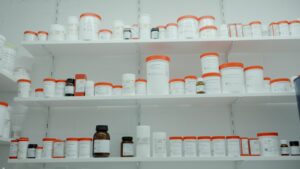Drug Launch Analytics: Comparing Cancer Drug Pricing and Strategies in the US vs Europe

Meta Description: Explore how drug launch analytics reveal disparities in cancer drug pricing between the US and Europe, and uncover the policy implications driving these trends.
Introduction
In the competitive landscape of the pharmaceutical industry, effective drug launch strategies are crucial for the successful introduction of new therapies to the market. This is especially true for cancer drugs, where pricing strategies can significantly impact accessibility, adoption, and overall market performance. Understanding the nuances of drug launch analytics provides valuable insights into how different regions navigate the complexities of pricing and market entry.
Pricing Disparities: US vs Europe
A comprehensive study published in JAMA Oncology analyzed the launch and postapproval pricing of cancer drugs in the United States compared to three European countries: England, Germany, and Switzerland. The findings revealed notable differences in pricing strategies:
-
Initial Launch Prices: In 2018-2019, the median monthly treatment costs for newly launched cancer drugs were significantly higher in the US ($14,580) compared to Germany ($5,888), Switzerland ($6,593), and England ($6,867). This marked increase contrasted sharply with the 2009-2010 figures, where US prices stood at $5,790.
-
Postlaunch Price Changes: From 2009 to 2019, 74% of cancer drugs in the US experienced price hikes exceeding inflation rates. In stark contrast, Europe saw minimal price increases, with only 2% in England, 0% in Germany, and 13% in Switzerland surpassing inflation-adjusted terms.
These disparities highlight the divergent approaches to drug pricing and the broader implications for drug launch strategies in different regions.
Factors Influencing Pricing Strategies
Several factors contribute to the differing pricing strategies between the US and Europe:
Regulatory Environment
The regulatory frameworks in Europe often involve centralized pricing negotiations and stricter controls on price increases post-launch. This contrasts with the US, where market-driven pricing allows for more flexibility but can lead to significant price escalations.
Market Dynamics
The US market’s size and higher willingness to pay for innovative therapies enable pharmaceutical companies to set higher prices. Conversely, European markets tend to emphasize cost-effectiveness and budget impact, influencing more conservative pricing decisions.
Clinical Benefits and Pricing Correlation
Interestingly, the study found no substantial association between the clinical benefits of cancer drugs and their launch prices or postlaunch price changes in any of the assessed countries. This disconnect suggests that pricing strategies may not always align with the therapeutic value provided by the drugs.
Impact on Drug Launch Strategies
The observed pricing disparities have profound implications for drug launch strategies:
-
Time-to-Market: In the US, higher prices can facilitate quicker market entry by maximizing initial revenues, whereas in Europe, the negotiation processes may extend the time-to-market.
-
Budget Considerations: Pharmaceutical companies must carefully balance pricing to ensure market acceptance in Europe while optimizing profitability in the US.
-
Competitive Positioning: Understanding regional pricing trends allows companies to tailor their strategies to remain competitive across different markets.
Policy Implications
The study underscores the need for policy reforms to address the high cost of cancer medicines, particularly in the US. Potential policy implications include:
-
Price Regulation: Implementing more stringent price controls in the US could help mitigate excessive price increases post-launch.
-
Value-Based Pricing: Encouraging pricing strategies that reflect the clinical benefits and therapeutic value of drugs to ensure fair pricing.
-
International Collaboration: Harmonizing pricing and reimbursement strategies across regions could lead to more consistent and equitable drug pricing globally.
The Role of Analytics in Optimizing Drug Launch Strategies
In light of these challenges, leveraging advanced analytics is essential for developing effective drug launch strategies. This is where innovative platforms like ConformanceX come into play.
ConformanceX: Innovative Drug Launch Optimization Platform
ConformanceX offers a comprehensive solution to optimize the drug launch process through:
-
AI-Enhanced Analytics: Utilizing artificial intelligence to provide accurate forecasts and predictive insights, enabling informed decision-making.
-
Real-Time Market Intelligence: Accessing up-to-date market data to adjust strategies dynamically and stay ahead of competitors.
-
Comprehensive Management Tools: Streamlining launch coordination, forecasting, and budget management to enhance efficiency and success rates.
By integrating these features, ConformanceX empowers pharmaceutical companies to navigate the complexities of different regional markets, ensuring successful and timely drug launches.
Conclusion
The landscape of drug launch strategies is significantly influenced by regional pricing dynamics and regulatory environments. The stark differences between the US and Europe in cancer drug pricing highlight the importance of tailored strategies that consider market-specific factors. Leveraging advanced analytics and innovative platforms like ConformanceX can bridge the gap, enabling pharmaceutical companies to optimize their launch processes, enhance market entry effectiveness, and ultimately improve patient access to vital therapies.
Ready to transform your drug launch strategy? Discover how ConformanceX can help.




